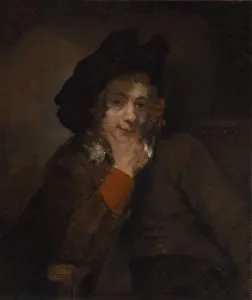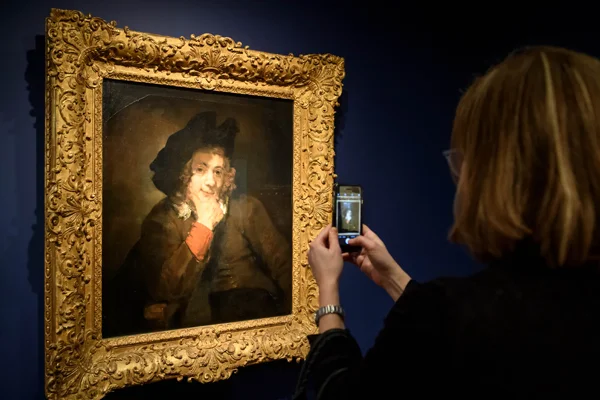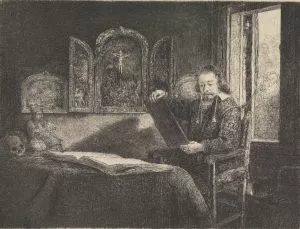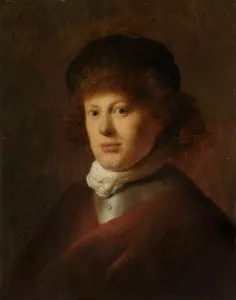Rembrandt’s Social Network
Even a great artist like Rembrandt was not a solitary genius. As a good networker he actively and purposefully cultivated his social network. He had family and friends who helped him, bought his art, lent him money and challenged him artistically. In Rembrandt’s Social Network you will get to know Rembrandt better through his friends: from his boyhood friend Jan Lievens and the art connoisseur Jan Six to his wife Saskia Uylenburgh’s family, his ‘blood friends’. This exhibition in the Rembrandt House Museum kicks off the Netherlands’ theme year Rembrandt and the Golden Age 2019, 350 years after his death.
As a friend Rembrandt was a strong-willed individual. He took little trouble to maintain good relations with the elite, preferring to surround himself with people who understood art. The extraordinarily intimate and informal atmosphere of his many works of art involving family members and friends made them unique in the seventeenth century.
‘Rembrandt’s world comes to life in the Rembrandt House. It was here that his friends and relations were regular visitors; here where he worked with countless pupils. It was where he shared joy and sorrow with his family. His clients and fellow artists were his neighbours. This makes it the ideal place to present the story of Rembrandt and his network and a perfect starting point for Rembrandt Year 2019.’
– Lidewij de Koekkoek, Director of The Rembrandt House Museum
Left: Rembrandt, Portrait of the Apothecary Abraham Francen, 1655-59, etching, drypoint and burin, 159 x 210 mm., Amsterdam Museum | Right: Jan Lievens, Portrait of Rembrandt, c. 1629, oil on panel, 57 x 44 cm., Rijksmuseum, private loan.
Boyhood Friend, ‘Blood Friend’ or True Friend?
Today Facebook asks you to categorize your online social network: ‘family’, a ‘good friend’ or perhaps simply ‘an acquaintance’. Anyone in the seventeenth-century would also be able to answer this question with ease: even then they had different categories of friendships. Striking portraits in Rembrandt’s Social Network enable us to identify five types of friendships in Rembrandt’s life.
There were the boyhood friends like the artist Jan Lievens, with whom Rembrandt shared a studio in Leiden. ‘Blood friends’ were family members who played a major role in Rembrandt’s social and financial life, in particular his wife Saskia Uylenburgh’s family. The connoisseurs, including Jan Six, were friendly collectors who bought works of art from Rembrandt and helped him with commissions. Among his artist friends there were also a number of pupil friends, like Philips Koninck, Roelant Roghman and Gerbrand van den Eeckhout. The close link with them is evidenced by the fact that Rembrandt went on excursions with them, where they drew together, and as a result their sketches are often very similar. Finally he had true friends: you get to know them in times of need. The hard times came for Rembrandt around 1652, when he was forty-six and money problems finally forced him to sell everything he owned. In this period he was helped by a few true friends, among them the collector Abraham Francen, for whom he made a special portrait print.

c. 1660
Oil on canvas, 81.5 x 78.5 cm
Baltimore, Museum of Art (The Mary Frick Jacobs Collection)
Highpoint: Rembrandt’s Portrait of Titus from Baltimore
The exhibition features paintings, drawings, prints, sculptures, books and documents. Among the eye-catchers are a number of unusual alba amicorum – friendship books – and the many portrait etchings Rembrandt made of various friends and relations. The highpoint of this exhibition is Rembrandt’s impressive and personal portrait of his nineteen-year-old son Titus. This special loan from the Baltimore Museum of Art has never before been shown in an exhibition in Europe.
Rembrandt’s son Titus worked for his famous father all his life. After Rembrandt went bankrupt in 1656, Titus and his father’s companion Hendrickje Stoffels took over the selling of his father’s works and started a gallery specializing in the great artist’s work. This kept his father’s creditors at bay and effectively made Titus his father’s employer. In Rembrandt’s painting, a relaxed Titus sits in his chair, his chin cupped in his hand. This loosely painted portrait is typical of the way Rembrandt approached his friends and members of his family – an informal and original masterpiece.



